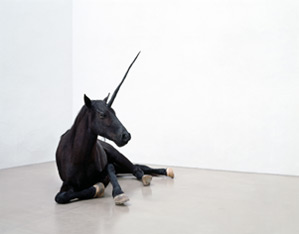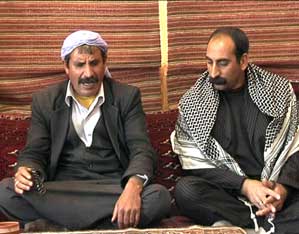 |
   
|
| RITORNELL. Nine Stories 22 November 2008 – 25 January 2009 |
|||||
|
|||||
|
Artists Halil Altindere, Fernando Bryce, Patricia Esquivias, Deimantas Narkevicius, Olaf Nicolai, Ola Pehrson, Romana Scheffknecht, Erzen Shkololli, Amelie von Wulffen |
||||
| Opening Friday, 21st November 2008, 6.30 pm in the context of the Innsbruck Premierentage Opening by Dr. Thomas Juen, Office of the Tyrolean Provincial Government, Department for Culture Dr. Susanne Neuburger, curator of MUMOK – Museum Moderner Kunst Stiftung Ludwig, Vienna, will speak about the exhibition. |
|||||
| Ritornell
(refrain) refers to the recurrence of a motif, an instrumental phrase
played at the beginning, end or middle of a piece in concerto grosso;
the refrain. For Deleuze/Guattari1, the refrain signifies an
“in-between”, the sphere between order and chaos:
“A
child in the dark, gripped with fear, comforts himself by singing under
its breath. [...] The song is like a rough sketch of a calming and
stabilizing, calm and stable, center in the heart of chaos.”
The Ritornell (refrain)
assists in the creation of a “territory”, a
“home”; however, it is also possible to set out
from it
once again, which facilitates “movements of escape”. In this exhibition, Ritornell is a metaphor representing nine artistic works in which the recurrence of motifs and reiteration play a part. The motifs themselves originate from various discourses, from history and the present day, and from everyday life as well as politics. The “stories” contained here are both real and fictional and concern the reporting format of contemporary media as well as that of traditional fables or stories. In their creative adaptation – using diverse media such as sculpture, drawing, video, photography and painting – it seems that something is set in motion, a “ritornell” via which these motifs are transposed using poetic, sometimes ironic means from the historical into the present day, and so made productive in terms of current experience. In his video of the same name (2007), Halil Altindere filmed the Dengbêjs, who belong to the Kurdish community and are singers, lyric poets and oral-vocal chroniclers all in one. Fernando Bryce transfers historical material − title pages and articles from the East Asia Review (2006) that are concerned with the economic policy in Eastern Asia during World War II − into the medium of drawing. Bryce employs his standardising style in order to bring about a de-hierarchisation of these events and so incorporates a simultaneous aspect of historical reflection. Patricia Esquivias tells her subjective story of Spain, its everyday myths and collective memory, in the videos Folklore #1 (2006) and Folklore #2 (2008). On the basis of articles from illustrated magazines, advertising material, postcards etc., she links together different events and phenomena and works out specific typologies that help to establish Spain’s identity, e.g. sunshine and the eternally suntanned pop singer Julio Iglesias. In Once in the XXth Century (2004), Deimantas Narkevicius uses TV material from the 1990s to show what is obviously the construction of a memorial, although all that can be seen is the monumental pedestal. The artist lends his own pointed, ironic interpretation to this event by means of cinematic cuts and technical methods. The sculpture La Lotta (2006) by Olaf Nicolai is a unicorn, a creature of fable that nonetheless appears to be alive, for its whole body radiates warmth; however, the temperature is so high − a mortally dangerous 42 degrees centigrade − that it also points back to the animal’s death and extinction. Ola Pehrson built a model of his parents’ house for Birthday Party (1:20) (2003); it is possible to look in through the windows, in order – with a strange shift in dimensions – to gain the illusionist impression that one can see what is happening inside the house, that is, his mother’s birthday party, which Pehrson filmed in the year 2000. In her work Untitled (Philosophical Investigations) (1992), Romana Scheffknecht has given a new function to the television screen that pours its daily soaps into our living rooms. Laid on its back, it is transformed into a pond with a small rowing boat floating on the surface, about which Scheffknecht says: “In the boat there is a woman – let’s call her Trude. One oar is in the water. On the edge, on the bank, a sailor is standing and watching the scene...” Erzèn Shkololli’s work Albanian Flag on the Moon (2001) is an ironic and critical commentary on the nationally overloaded fantasy of a “Great Albania”. Two pictures by Amelie von Wulffen, both Untitled (2004 and 2005), evoke memory and trauma; one shows interwoven interiors completely empty of human beings, in the other we see a family portrait with five children’s heads, appearing on a painterly surface lacking in spatial definition. 1 Gilles Deleuze, Félix Guattari, A Thousand Plateaus, London 2004 (1980). |
|||||
|

